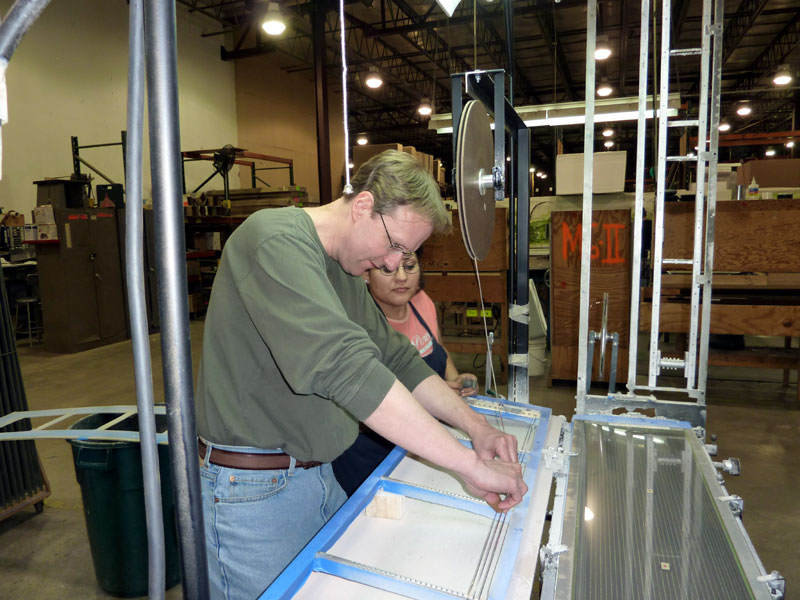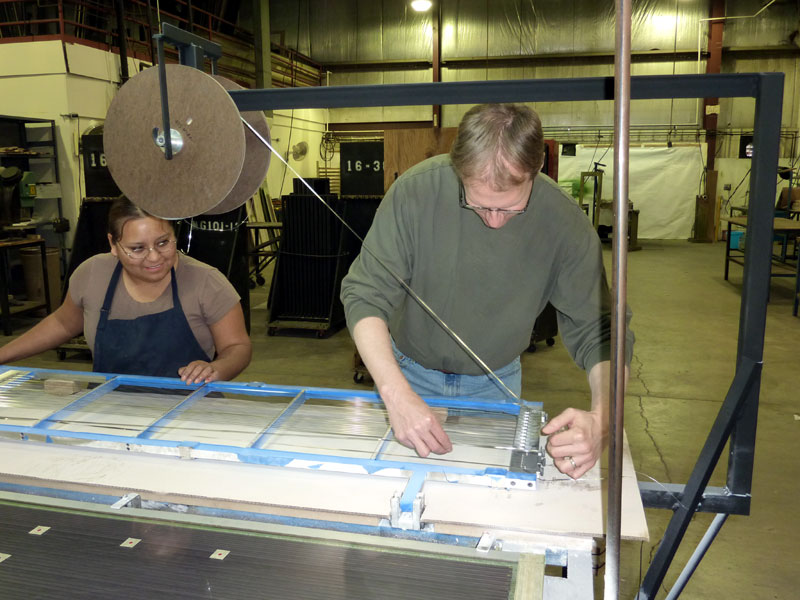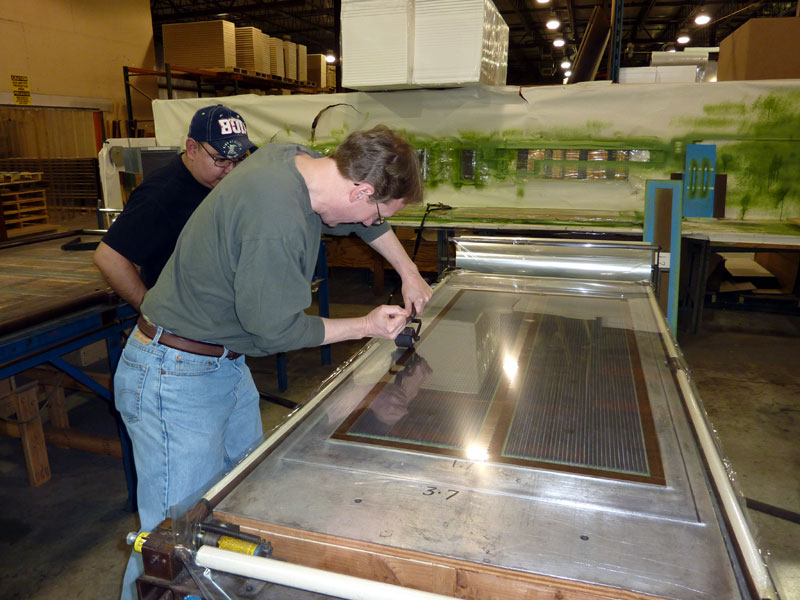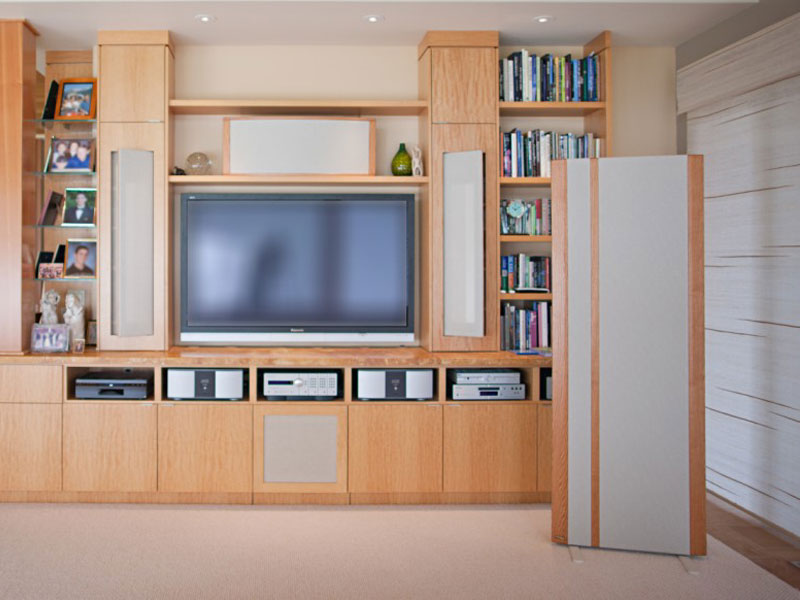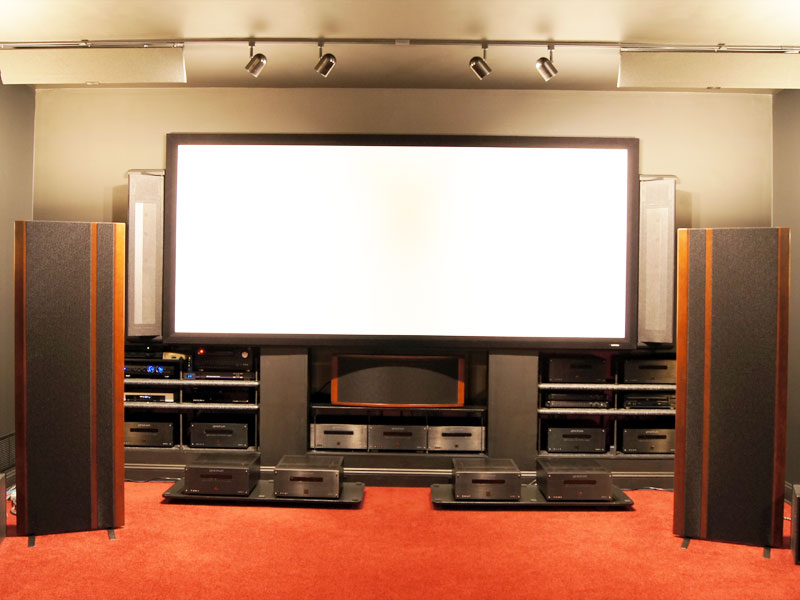Monday at Magnepan
hat has become a summer ritual -- traveling to Minneapolis to visit the audio companies located in the area -- commenced a couple of months early this year. Perhaps the cold weather, and not the recirculated air in the plane, was to blame for the respiratory infection I brought home with me. I felt good while I was in Minnesota, however, anticipating a Monday-morning visit to Magnepan, where I'd get to do some hands-on investigation and hear a system that was more impressive than its advance billing indicated. Making a Maggie
first visited Magnepan in 2001, spending most of my time walking around the production floor as part of a classic factory tour. In the past ten years, Magnepan has both changed and remained essentially the same. Founder Jim Winey retired, leaving his son Mark to guide the company. New models have emerged, including the 1.7 and 3.7, which have the company scrambling to keep up with orders. On the production floor, however, things look pretty much the same. Magnepan still makes each speaker stem to stern with the same proprietary tooling and jigs. Each begins as a sheet of MDF, strips of magnets, strands of a aluminum ribbon, sheets of mylar, passive parts and acoustically transparent cloth, all of which is fashioned into an MMG, 1.7 or MG20.1. There are no outside vendors making driver panels or ribbon tweeters. Workers with years of experience make the process look efficient but by no means easy.
After observing the production line as it snaked around the factory, I attempted some of individual jobs that produce a Magnepan speaker. I first laid the ribbon for the midrange driver. This involves pulling the ribbon off a hanging spool and threading it through a custom-made jig in one continuous piece. I did about a third of the driver -- slower and sloppier than the woman who was guiding me. This ribbon has a sharp edge, so in addition to having the dexterity to follow the jig, you need to be vigilant so you don't cut yourself, which happened to me anyway. I next laid ribbon for the tweeter. This is narrower and thinner, requiring even greater concentration and skill. I thought that all of the ribbon I laid would have to be pulled out and thrown away, but the women who do this day in and day out were easily able to fix my unhandiwork and take up where I left off.
I then stretched the mylar over finished panels. Here again a custom table built at Magnepan was the tool du jour, holding the mylar in place and stretching it precisely, based on the speaker for which the panel would be used. I was able to do this step from beginning to end, so some unwitting customer will get speakers with panels I helped create.
I was a mere spectator in the area where the ribbon tweeters are made. The foil is so thin and light that you can't even feel an inch-long piece of it as it rests in your palm. This makes crafting a ribbon tweeter an exercise in futility for the uninitiated. When you watch the experts do it, you are glad to skip this step -- and half-astonished that someone can actually build these esoteric drivers. On occasion, Magnepan takes a group of its dealers through this same set of speaker-building exercises. They gain not only an understanding of the manufacturing process, but also appreciation for the skill required to make what they're selling. Because of all the precise work that has to be done, outsourcing to Asia seems so inefficient as to be impossible. America is still great at making things, and among them are audiophile speakers. Stereo improved
he main reason for my visit came after my time on the factory floor. Wendell Diller, Magnepan's marketing manager, came across something that he wanted me to hear -- first to give my feedback and then to confirm or deny what he and others were hearing: a genuine challenge to two-speaker stereo sound. "I have mixed feelings about your visit," Wendell told me. "In one respect, we seem to be making an outrageous claim. Did we stumble upon 'cold fusion'? We have no expertise in this area, yet 'golden ears' have consistently picked the 'wrong' system in blind A-B tests. It has been, and is, upsetting to all my assumptions."
Like anyone might, I immediately thought I would be hearing an updated version of an existing speaker, but that's not what was set up in Magnepan's pitch-black listening room. There were actually two systems that I could toggle between with the push of a button on a remote control. One was a standard stereo pair of 3.7s ($5495/pair). The other, "'wrong'" system used the 3.7s and added Magnepan's Tri-Center, which consists of a pair of MMC2 wall-mounted speakers ($1995/pair) and a CCR center-channel speaker ($2995). Electronics were a Bryston SP2 surround-sound processor, which was used to steer stereo signals to the three speakers, a Bryston 9B SST2 five-channel amp (only three channels were used) and a modified Denon DVD-3910 universal A/V player, which was connected to the Bryston processor by its XLR stereo outputs. There have been numerous attempts to "fix" stereo playback, from those that employ phasey ambience processing to those that are mostly marketing fluff. I've never embraced any of them -- or multichannel audio, for that matter, which makes good sense and can be very effective, although the extra speakers and hardware are impediments, at least for me. Thus, I was an utter skeptic of Magnepan's system, which, I reasoned, would represent different sound, but not definitively better sound. I've also participated in a few of Wendell's past demos, and while the results have been interesting, they never made me rethink something as foundational as strict two-channel audio.
There's certainly nothing wrong with a stereo pair of 3.7s, but adding the Tri-Center made the presentation sound far more right. This system was more fleshed out tonally and continuous spatially, markedly increasing the music's presence and vibrancy. Rather like what a better camera lens achieves, the soundscape was deeper and more vivid at the same time. There was also greater midbass power, which translated to rhythmic drive with greater heft and momentum. None of these differences was subtle, and their cumulative effect was easy to recognize no matter the music. A few Magnepan owners have the hybrid stereo/three-channel system; it's pictures of these systems that are shown above (Magnepan's demo room looked like Rube Goldberg's lab on the day of my visit). I honestly can't imagine that anyone who owns a pair of Magnepan speakers would hear this presentation and not prefer it -- with the added benefit of playing movies with theater-like sound. As a final bit of demo magic, we watched part of Castaway on the small screen of a portable DVD player, and this made a strong case for spending more on home-theater speakers than on the display. What to take away from this demo? I think that depends on
where Magnepan decides to go with this system from here -- hopefully into my listening
room, so I can report further. |

